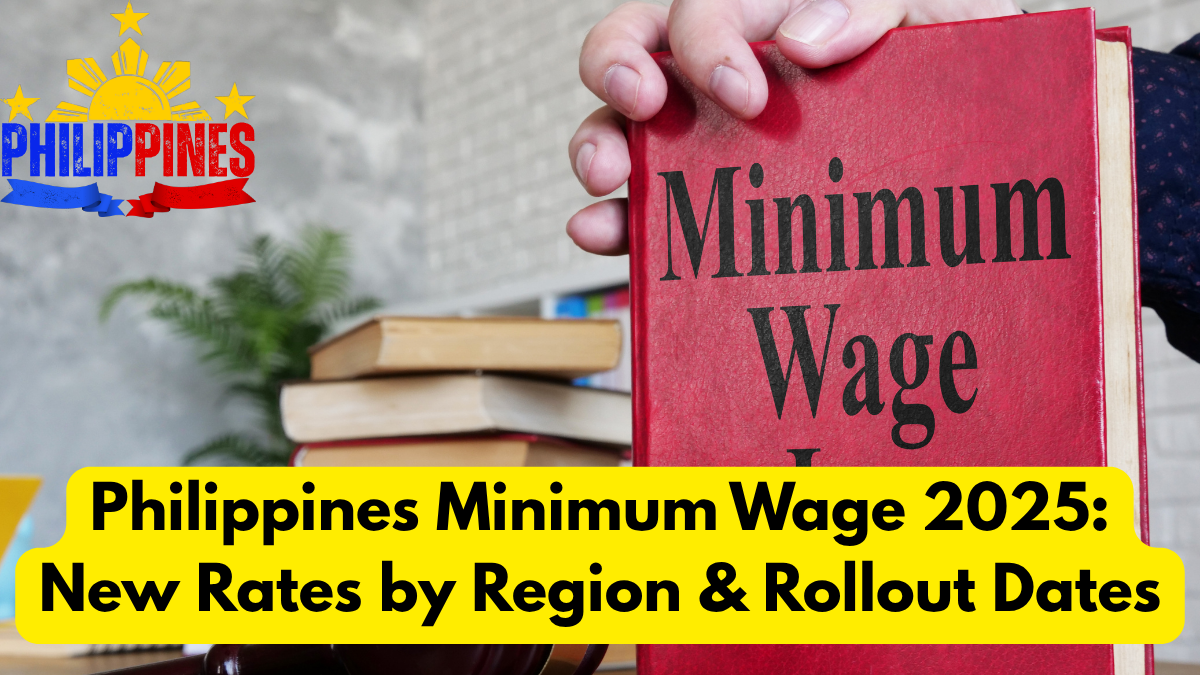The Philippines minimum wage 2025 update has brought a wave of attention among workers, employers, and policymakers as the country aims to balance inflation pressures with fair compensation. The government, through the Regional Tripartite Wages and Productivity Boards (RTWPBs), has officially announced new rates across various regions, ensuring that workers’ pay keeps pace with the cost of living.
As the economy recovers from recent global challenges, this wage adjustment reflects the government’s continued commitment to social equity and economic growth. The updated Philippines minimum wage 2025 not only aims to improve workers’ purchasing power but also to encourage productivity and stability in both urban and rural industries. Let’s take a closer look at the revised rates, their rollout schedule, and what they mean for different regions across the country.

Overview of New Minimum Wage Rates
The new Philippines minimum wage 2025 reflects a structured approach to wage adjustments, recognizing the diversity in economic conditions across different regions. The Wage Boards have approved increases ranging from ₱30 to ₱75 per day depending on regional classifications and sector types.
This adjustment impacts millions of workers across sectors like manufacturing, retail, construction, and agriculture. For Metro Manila, the highest-paying region, the new rates have reached ₱645 per day for non-agricultural workers, while other regions have implemented proportional increases.
Key highlights of the rates update include:
- Average nationwide increase: ₱50 per day
- Effective date of implementation: March 1, 2025
- Second rollout phase for selected regions by July 2025
- Coverage includes private, service, and industrial sectors
The new rates are expected to help offset inflation and improve household spending, especially among minimum wage earners.
Here’s a snapshot of the updated Philippines minimum wage 2025 structure across select regions:
| Region | Sector | Previous Rate (₱/day) | New Rate (₱/day) | Effective Date |
|---|---|---|---|---|
| NCR (Metro Manila) | Non-Agricultural | 610 | 645 | March 1, 2025 |
| Region III (Central Luzon) | Industrial/Commercial | 480 | 520 | March 15, 2025 |
| Region VI (Western Visayas) | Service Sector | 450 | 500 | April 1, 2025 |
| Region XI (Davao Region) | Agricultural | 445 | 495 | May 1, 2025 |
| Region XIII (Caraga) | Non-Agricultural | 400 | 450 | July 2025 |
This wage hike is part of a two-phase rollout that ensures employers have adequate time to comply while workers start benefiting early in the year.
Regional Implementation and Rollout Plan
The rollout of the Philippines minimum wage 2025 will happen in two key phases. The first phase began in March 2025 for major metropolitan regions, while the second will cover smaller regions and agricultural areas by mid-year. Each RTWPB is responsible for enforcing and monitoring compliance within its jurisdiction.
The government has also provided guidelines for enterprises with less than 10 employees, allowing a grace period of 60 days from the rollout date to adjust their payroll systems. Labor inspectors will be deployed across regions to ensure transparency and compliance with the new rates.
Additionally, the Department of Labor and Employment (DOLE) is introducing a Wage Compliance Monitoring App, allowing employees to check whether their employers are adhering to the official rates applicable to their respective regions.
Economic Impact and Employer Reactions
The Philippines minimum wage 2025 adjustment has been generally welcomed by worker unions as a long-overdue step toward fair compensation. However, small business associations have expressed concern about the potential impact of increased labor costs on operations, especially in rural regions.
Economists note that the new rates could stimulate consumption by improving household incomes, leading to stronger local economies. The rollout strategy ensures a gradual transition to prevent financial strain on micro and small enterprises.
Government support measures include wage subsidies, training grants, and productivity-based incentives for employers who maintain workforce levels despite the wage hike.
Comparison with Previous Minimum Wage Updates
To understand the scope of the Philippines minimum wage 2025, here’s a comparison with the last major update in 2023:
| Year | Average National Daily Rate | % Increase | Primary Focus Regions |
|---|---|---|---|
| 2023 | ₱520 | — | Metro Manila, Cebu, Davao |
| 2025 | ₱570 | 9.6% | Nationwide with regional parity |
The 2025 update is broader in scope, aiming for more uniform growth in wage rates across regions, reducing disparities between urban and rural areas.
Conclusion
The Philippines minimum wage 2025 update represents a balanced and strategic approach to economic fairness. By adjusting rates across diverse regions and executing a phased rollout, the government ensures that both workers and businesses can adapt effectively. While challenges remain, this initiative signifies progress toward a more equitable labor market.
For workers, the wage hike promises relief from inflationary pressures, while employers benefit from increased productivity and employee satisfaction. The 2025 wage adjustment is a step toward sustainable economic growth — one that prioritizes both people and progress.
FAQs
When will the new Philippines minimum wage 2025 take effect?
The first phase of the rollout began on March 1, 2025, with the second phase extending to July 2025 for remaining regions.
How much is the new minimum wage rate in Metro Manila?
For the NCR, the new rate is ₱645 per day for non-agricultural workers, up from ₱610.
Are all regions included in the 2025 wage hike?
Yes, all regions are covered under the Philippines minimum wage 2025, though implementation dates vary.
What is the reason behind the new wage rates?
The wage increase aims to offset inflation and ensure fair compensation in line with rising living costs across all regions.
How will the government ensure compliance with the new wage rollout?
The Department of Labor and Employment will monitor all regions using inspections, reporting tools, and digital tracking to enforce the new rates during the rollout.
Click here to know more.